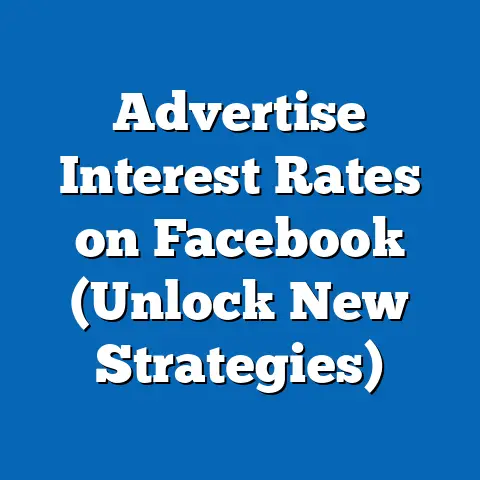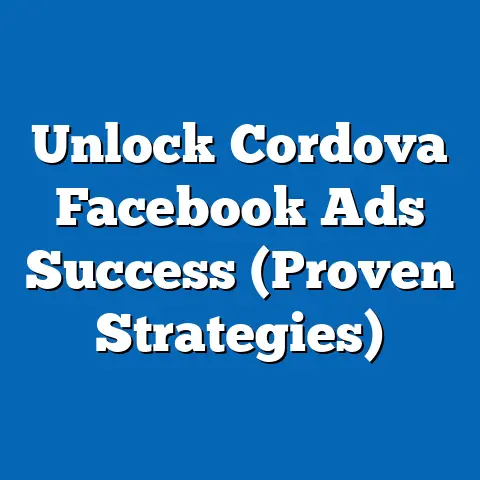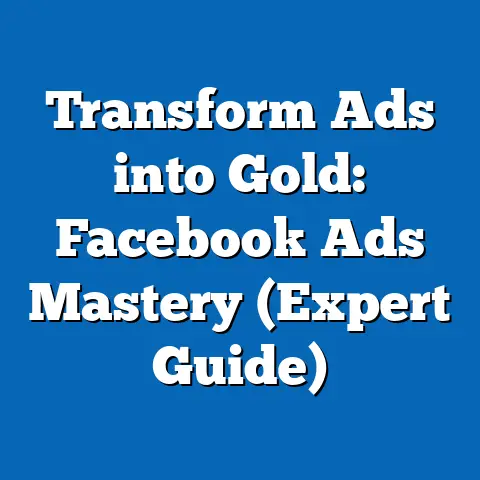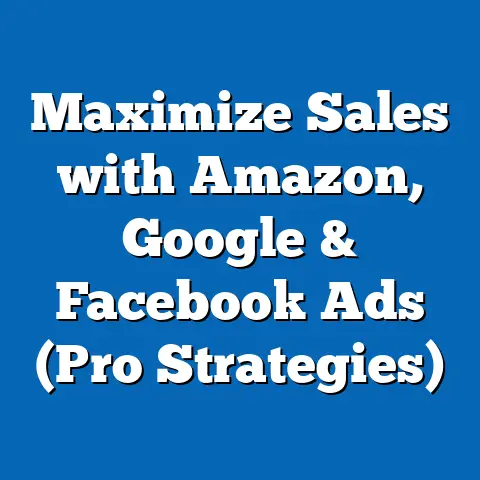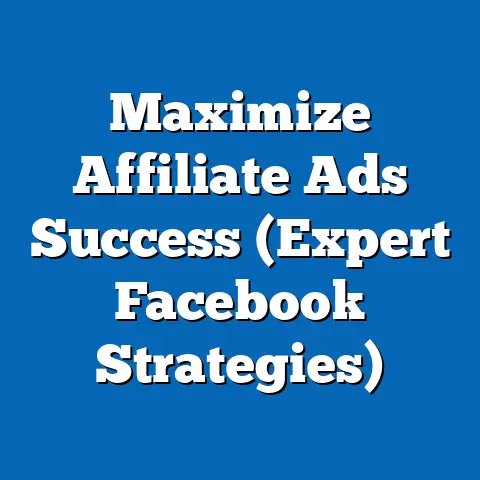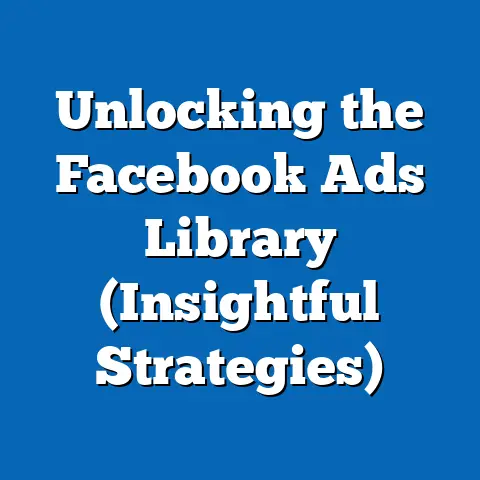Boost AdGuard Facebook Ads Impact (Proven Strategies)
Have you ever scrolled through Facebook and noticed how some ads just seem to jump out at you, while others fade into the background? It’s a question that’s plagued me for years, especially working in digital marketing. Why do some campaigns resonate so powerfully, while others fall flat? And, perhaps even more crucially in today’s landscape, how do we ensure our ads still reach the right audience when ad blockers like AdGuard are becoming increasingly prevalent?
Facebook advertising is a cornerstone of modern digital marketing, offering businesses unparalleled reach and targeting capabilities. But with the rise of ad blockers like AdGuard, it’s becoming increasingly challenging to ensure your carefully crafted messages actually reach your intended audience. This article isn’t just another guide to Facebook Ads; it’s a deep dive into proven strategies that will help you enhance the effectiveness of your Facebook ads, specifically when navigating the complexities of ad blockers like AdGuard. I’ll share my personal experiences, data-driven insights, and actionable techniques that you can implement right away.
Understanding Facebook Ads and AdGuard
Before we jump into the strategies, it’s crucial to establish a solid foundation of understanding. We need to know what we’re working with, and what we’re up against.
Overview of Facebook Ads
Facebook Ads, at their core, are paid messages that businesses use to reach a specific audience on the Facebook platform. They appear in various formats, blending seamlessly (or at least, attempting to) into the user’s newsfeed, stories, and other areas of the site. The power of Facebook Ads lies in their incredible targeting capabilities. Businesses can pinpoint their ideal customers based on demographics, interests, behaviors, and even custom audiences built from their own website data.
Think of it like this: imagine you’re running a local bakery. Instead of relying on flyers and word-of-mouth, you can use Facebook Ads to target people within a 5-mile radius who have expressed an interest in baking, desserts, or even specific types of pastries. You can even target people who have visited your website but haven’t made a purchase yet. The possibilities are truly endless.
Here’s a quick rundown of the most common types of Facebook Ads:
- Image Ads: Simple, clean, and effective. These ads use a single image to convey your message. They’re great for showcasing products, announcing sales, or driving traffic to your website.
- Video Ads: Captivating and engaging, video ads are perfect for telling stories, demonstrating product features, or creating brand awareness. They tend to perform well because they capture attention quickly. I’ve personally found that shorter, punchier videos (under 15 seconds) often outperform longer ones.
- Carousel Ads: These ads allow you to showcase multiple images or videos in a single ad unit. They’re ideal for highlighting different products, features, or aspects of your brand. Think of them as a mini-catalog within the Facebook feed.
- Collection Ads: These ads are designed for e-commerce businesses. They allow you to display a collection of products in a visually appealing format, making it easy for users to browse and purchase directly from Facebook.
- Instant Experience Ads: These are full-screen, mobile-optimized experiences that open when someone clicks on your ad. They’re great for creating immersive brand experiences and driving conversions.
- Lead Ads: These ads are designed to collect leads directly from Facebook. They pre-populate forms with user information, making it incredibly easy for people to sign up for newsletters, request quotes, or download resources.
- Story Ads: These ads appear in the immersive, full-screen format of Facebook Stories. They’re great for reaching a younger audience and creating a sense of urgency.
Each of these ad types offers unique advantages, and the best choice for your business will depend on your specific goals and target audience.
Introduction to AdGuard
Now, let’s talk about AdGuard. In simple terms, AdGuard is an ad blocker and privacy protection tool. It works by filtering web traffic and blocking unwanted content, including ads, trackers, and malware. It’s available as a browser extension, a desktop application, and even a mobile app.
AdGuard is becoming increasingly popular as users become more aware of online privacy and the intrusiveness of online advertising. They want to browse the web without being bombarded by ads, and they want to protect their personal data from being tracked. I’ve even noticed more and more of my friends and family using ad blockers, which highlights just how mainstream they’ve become.
From a user’s perspective, AdGuard offers a cleaner, faster, and more secure browsing experience. But from an advertiser’s perspective, it presents a significant challenge. When AdGuard detects a Facebook Ad, it blocks it from appearing on the user’s screen. This means that your carefully crafted messages, your beautifully designed visuals, and your meticulously targeted campaigns might never reach a significant portion of your intended audience.
The Challenge
The increasing adoption of ad blockers like AdGuard poses a real threat to the effectiveness of Facebook Ads. It’s like trying to shout your message across a crowded room when half the people are wearing noise-canceling headphones.
The numbers paint a clear picture. According to recent studies, ad blocker usage is on the rise, with millions of people worldwide using these tools to block online advertising. This translates to a significant portion of your potential audience being shielded from your ads.
The impact of ad blockers on ad performance can be substantial. It can lead to:
- Reduced Reach: Your ads simply aren’t seen by as many people.
- Lower Click-Through Rates (CTR): Fewer people seeing your ads means fewer people clicking on them.
- Decreased Conversion Rates: If people aren’t seeing your ads, they can’t convert into customers.
- Wasted Ad Spend: You’re paying for ads that aren’t being seen, which is essentially throwing money away.
I’ve personally seen campaigns where ad blocker usage has significantly impacted performance, leading to lower ROI and frustrated clients. It’s a challenge that every digital marketer needs to address head-on.
Takeaway: Understanding the interplay between Facebook Ads and AdGuard is crucial for developing effective strategies. Ad blockers are a reality, and we need to adapt our approach to ensure our messages still reach our target audience. The rise of ad blockers is a challenge, but it’s also an opportunity to become more creative, more targeted, and more valuable in our advertising efforts.
Proven Strategies to Boost Facebook Ads Impact with AdGuard
Now that we understand the challenge, let’s dive into the solutions. These are the strategies I’ve personally used and seen success with, and I’m confident they can help you boost the impact of your Facebook Ads, even with AdGuard in the mix.
Crafting Engaging Ad Content
The first line of defense against ad blockers is creating ads that people actually want to see. Think about it: people use ad blockers because they’re tired of intrusive, irrelevant, and annoying ads. If your ads are genuinely engaging, valuable, and relevant, people are less likely to block them in the first place.
This starts with understanding your audience. What are their pain points? What are their aspirations? What kind of content do they enjoy? Once you have a clear understanding of your target audience, you can craft ad copy and visuals that resonate with them on a deeper level.
Here are some tips for creating compelling ad content:
- Focus on the benefits, not just the features: Instead of simply listing the features of your product or service, explain how it will benefit the user. How will it solve their problems? How will it make their lives easier?
- Tell a story: People love stories. Use your ad copy to tell a compelling story that captures the user’s attention and makes them want to learn more.
- Use emotional triggers: Tap into the user’s emotions to create a connection. This could be anything from humor to empathy to inspiration.
- Offer value: Provide something of value to the user, such as a discount, a free resource, or a helpful tip.
- Use high-quality visuals: Your images and videos should be visually appealing and relevant to your message. Invest in professional photography or videography if necessary.
- Keep it concise: People have short attention spans. Get to the point quickly and use clear, concise language.
I’ve found that storytelling is particularly effective. For example, instead of just saying “Our coffee is delicious,” you could tell the story of how your coffee beans are ethically sourced and roasted to perfection. This creates a more emotional connection with the user and makes them more likely to try your coffee.
Example:
Let’s say you’re selling a productivity app. Instead of saying “Our app helps you get more done,” you could say something like:
“Feeling overwhelmed by your to-do list? Imagine waking up each day knowing exactly what you need to accomplish and feeling confident that you can achieve your goals. Our productivity app helps you break down your tasks, prioritize your time, and stay focused on what matters most. Download our free trial today and start feeling more productive!”
This ad copy focuses on the benefits of the app (feeling less overwhelmed, being more confident, achieving goals) and uses emotional triggers (feeling overwhelmed) to create a connection with the user. It also offers value (a free trial) to incentivize them to take action.
Takeaway: Engaging ad content is paramount. By focusing on the benefits, telling stories, using emotional triggers, offering value, and using high-quality visuals, you can create ads that people actually want to see, making them less likely to be blocked by AdGuard.
Targeting the Right Audience
Even the most engaging ad content will fall flat if it’s not reaching the right audience. Facebook’s advanced targeting options are a powerful tool, but they need to be used strategically.
Think of targeting like aiming a bow and arrow. You need to know your target (your ideal customer) and adjust your aim accordingly. If you’re aiming at the wrong target, you’re wasting your time and energy.
Here are some tips for targeting the right audience on Facebook:
- Define your ideal customer: Who are they? What are their demographics? What are their interests? What are their behaviors? The more specific you can be, the better.
- Use Facebook’s detailed targeting options: Facebook allows you to target users based on a wide range of criteria, including demographics, interests, behaviors, and connections.
- Create custom audiences: You can create custom audiences based on your own data, such as website visitors, email subscribers, or customer lists. This allows you to target people who have already interacted with your brand.
- Use lookalike audiences: Facebook can create lookalike audiences based on your custom audiences. This allows you to reach new people who are similar to your existing customers.
- Test different targeting options: Don’t be afraid to experiment with different targeting options to see what works best for your business.
I’ve personally found that creating custom audiences is incredibly effective. For example, if you have a list of email subscribers, you can upload that list to Facebook and create a custom audience. Then, you can target those subscribers with ads that are specifically tailored to their interests.
Example:
Let’s say you’re selling a yoga retreat. You could target users who are interested in yoga, meditation, wellness, and travel. You could also create a custom audience based on people who have visited your website or signed up for your email list. Then, you could create a lookalike audience based on your custom audience to reach new people who are similar to your existing customers.
Case Study:
I once worked with a local bookstore that was struggling to attract new customers. We used Facebook Ads to target people within a 10-mile radius who had expressed an interest in reading, books, or specific genres like mystery or science fiction. We also created a custom audience based on people who had visited the bookstore’s website.
The results were remarkable. The bookstore saw a significant increase in foot traffic and sales. They were able to reach a highly targeted audience with ads that were relevant to their interests.
Takeaway: Precise targeting is key. By defining your ideal customer, using Facebook’s detailed targeting options, creating custom audiences, using lookalike audiences, and testing different targeting options, you can ensure that your ads are reaching the right people, making them more effective and less likely to be blocked.
Optimizing Ad Placement
Facebook Ads can appear in a variety of placements, including the newsfeed, the right column, Instagram, and the Audience Network. Each placement has its own advantages and disadvantages, and the best choice for your business will depend on your specific goals and target audience.
However, when it comes to mitigating the effects of AdGuard, some placements are more effective than others. AdGuard is primarily designed to block ads that appear on websites and in apps. This means that ads that appear directly on Facebook (in the newsfeed and in stories) are less likely to be blocked.
Here are some tips for optimizing ad placement to mitigate the effects of AdGuard:
- Focus on Facebook placements: Prioritize placements that appear directly on Facebook, such as the newsfeed and stories.
- Test different placements: Experiment with different placements to see what works best for your business.
- Monitor your results: Track the performance of your ads in different placements to see which ones are generating the best results.
I’ve personally found that Facebook News Feed ads tend to perform the best, as they blend seamlessly into the user’s feed and are less likely to be perceived as intrusive.
Example:
Let’s say you’re running a campaign to promote a new product. You could start by focusing on Facebook News Feed ads and Facebook Stories ads. Then, you could experiment with other placements, such as the right column or the Audience Network, to see if they generate better results.
Takeaway: Strategic ad placement can help you circumvent AdGuard. By prioritizing Facebook placements, testing different options, and monitoring your results, you can maximize the reach and effectiveness of your ads.
Utilizing A/B Testing
A/B testing, also known as split testing, is a powerful technique for optimizing your Facebook Ads. It involves creating two versions of an ad (A and B) and showing them to different segments of your audience. By tracking the performance of each version, you can determine which one is more effective.
A/B testing can be used to optimize a wide range of elements, including:
- Ad copy: Test different headlines, body copy, and calls to action.
- Visuals: Test different images and videos.
- Targeting: Test different targeting options.
- Placement: Test different ad placements.
I’ve personally found that A/B testing is essential for identifying the most effective ad strategies. It allows you to make data-driven decisions and avoid relying on guesswork.
Here’s a step-by-step guide on how to set up A/B tests for Facebook Ads:
- Define your goal: What do you want to achieve with your A/B test? Do you want to increase click-through rates? Do you want to improve conversion rates?
- Choose a variable to test: What element of your ad do you want to test? Choose one variable at a time to ensure that you can accurately attribute the results.
- Create two versions of your ad: Create two versions of your ad that are identical except for the variable you’re testing.
- Set up your A/B test in Facebook Ads Manager: Facebook Ads Manager makes it easy to set up A/B tests. Simply create a new campaign and choose the “A/B Test” objective.
- Set your budget and schedule: Determine how much you want to spend on your A/B test and how long you want it to run.
- Monitor your results: Track the performance of each version of your ad to see which one is more effective.
- Implement the winning version: Once your A/B test is complete, implement the winning version of your ad in your regular campaigns.
Example:
Let’s say you want to test different headlines for your ad. You could create two versions of your ad: one with the headline “Get More Done with Our Productivity App” and another with the headline “Stop Feeling Overwhelmed with Our Productivity App.” Then, you could run an A/B test to see which headline generates more clicks.
Takeaway: A/B testing is your secret weapon. By testing different ad elements, you can identify what resonates most with your audience, leading to more effective ads that are less likely to be ignored or blocked.
Leveraging Retargeting Campaigns
Retargeting is a powerful advertising technique that allows you to show ads to people who have already interacted with your brand. This could include people who have visited your website, viewed your products, or added items to their cart.
Retargeting is effective because it allows you to reach people who are already familiar with your brand and are more likely to be interested in your products or services. It’s like reminding someone who almost bought something that they still have the opportunity to do so.
Here are some strategies for setting up effective retargeting campaigns on Facebook:
- Install the Facebook Pixel on your website: The Facebook Pixel is a piece of code that allows you to track website visitors and their actions. It’s essential for setting up retargeting campaigns.
- Create custom audiences based on website activity: You can create custom audiences based on people who have visited specific pages on your website, viewed certain products, or added items to their cart.
- Create ads that are tailored to your audience: Your retargeting ads should be tailored to the specific actions that people have taken on your website. For example, if someone added an item to their cart but didn’t complete the purchase, you could show them an ad that reminds them of the item and offers a discount.
- Use dynamic product ads: Dynamic product ads automatically show people the products that they viewed on your website. This is a highly effective way to remind people of what they were interested in and encourage them to complete the purchase.
I’ve personally seen retargeting campaigns generate incredible results. They’re a great way to boost conversions and increase ROI.
Example:
Let’s say someone visits your website and views a specific product. You could show them a retargeting ad that features that product and offers a discount. This reminds them of the product and incentivizes them to make a purchase.
Success Story:
I worked with an e-commerce business that was struggling to convert website visitors into customers. We set up a retargeting campaign that showed people ads for the products that they had viewed on the website. We also offered a discount to incentivize them to complete the purchase.
The results were amazing. The business saw a significant increase in conversions and revenue. The retargeting campaign was highly effective at reminding people of what they were interested in and encouraging them to make a purchase.
Takeaway: Retargeting is your secret weapon for converting warm leads. By reminding people of your brand and their interest in your products or services, you can boost conversions and overcome the challenges posed by ad blockers.
Advanced Techniques for Facebook Ads
Now that we’ve covered the foundational strategies, let’s explore some advanced techniques that can take your Facebook Ads to the next level. These techniques require a bit more effort and expertise, but they can deliver significant results.
Using Video Content
Video content is king in the digital world. It’s engaging, captivating, and highly effective at capturing attention. Video ads tend to perform better than static ads because they’re more visually appealing and can convey more information in a shorter amount of time.
I’ve personally seen video ads generate significantly higher engagement rates than static ads. They’re a great way to tell your brand story, showcase your products, and connect with your audience on a deeper level.
Here are some tips for creating engaging video content for Facebook Ads:
- Keep it short and sweet: People have short attention spans. Aim for videos that are under 15 seconds.
- Grab attention quickly: The first few seconds of your video are crucial. Use a visually appealing opening to capture the user’s attention.
- Tell a story: Use your video to tell a compelling story that resonates with your audience.
- Showcase your products: Demonstrate how your products work and highlight their benefits.
- Use high-quality visuals: Your video should be visually appealing and well-produced.
- Add captions: Many people watch videos with the sound off. Add captions to ensure that your message is still conveyed.
- Use a clear call to action: Tell viewers what you want them to do, such as visit your website, download your app, or make a purchase.
Example:
Let’s say you’re selling a travel backpack. You could create a short video that shows people using your backpack on their adventures. You could showcase the backpack’s features, such as its durability, its comfort, and its storage capacity. You could also include a call to action that encourages viewers to visit your website and learn more.
Takeaway: Embrace video. By creating engaging and visually appealing video content, you can capture attention, tell your brand story, and connect with your audience on a deeper level.
Incorporating User-Generated Content
User-generated content (UGC) is any content that is created by your customers or fans. This could include photos, videos, reviews, or testimonials.
UGC is incredibly valuable because it’s authentic, trustworthy, and relatable. People are more likely to trust recommendations from their peers than they are from brands.
I’ve personally seen UGC campaigns generate incredible results. They’re a great way to build trust, increase brand awareness, and drive sales.
Here are some strategies for encouraging users to create and share content related to your brand:
- Run a contest or giveaway: Encourage users to submit photos or videos related to your brand for a chance to win a prize.
- Ask for reviews and testimonials: Ask your customers to leave reviews and testimonials on your website or social media pages.
- Feature UGC on your social media channels: Share UGC on your social media channels to showcase your customers and their experiences with your brand.
- Create a hashtag: Create a hashtag that users can use to share their content related to your brand.
- Offer incentives: Offer incentives, such as discounts or free products, to users who create and share UGC.
Example:
Let’s say you’re selling a fitness app. You could run a contest that encourages users to share photos of themselves using your app and reaching their fitness goals. You could then feature the winning photos on your social media channels.
Case Study:
I worked with a clothing brand that was looking to increase brand awareness and drive sales. We launched a UGC campaign that encouraged customers to share photos of themselves wearing the brand’s clothing on social media using a specific hashtag. We then featured the best photos on the brand’s social media channels.
The campaign was a huge success. The brand saw a significant increase in brand awareness, website traffic, and sales. The UGC campaign was highly effective at showcasing the brand’s clothing and building trust with potential customers.
Takeaway: Harness the power of your community. By incorporating user-generated content into your Facebook Ads, you can build trust, increase brand awareness, and drive sales.
Utilizing Lookalike Audiences
Lookalike audiences are a powerful targeting tool that allows you to reach new people who are similar to your existing customers. Facebook uses its data to identify users who share similar demographics, interests, and behaviors with your custom audiences.
I’ve personally found lookalike audiences to be incredibly effective for expanding reach and acquiring new customers. They’re a great way to tap into a pool of potential customers who are likely to be interested in your products or services.
Here’s how to create and optimize lookalike audiences on Facebook:
- Create a custom audience: Start by creating a custom audience based on your existing customers, website visitors, or email subscribers.
- Create a lookalike audience: In Facebook Ads Manager, select your custom audience and choose the “Create Lookalike Audience” option.
- Choose your lookalike audience size: Facebook allows you to choose the size of your lookalike audience. A smaller audience will be more similar to your custom audience, while a larger audience will be less similar.
- Target your lookalike audience: Once you’ve created your lookalike audience, you can target them with your Facebook Ads.
- Monitor your results: Track the performance of your ads to see how well your lookalike audience is performing.
Example:
Let’s say you have a custom audience of your best customers. You could create a lookalike audience based on that custom audience to reach new people who are similar to your best customers.
Case Study:
I worked with a subscription box company that was looking to acquire new subscribers. We created a lookalike audience based on their existing subscribers and targeted them with Facebook Ads.
The results were impressive. The company saw a significant increase in new subscribers at a lower cost per acquisition. The lookalike audience was highly effective at identifying potential subscribers who were likely to be interested in their subscription box.
Takeaway: Expand your reach with lookalike audiences. By targeting new people who are similar to your existing customers, you can acquire new customers and grow your business.
Building a Strong Brand Presence
In today’s digital landscape, building a strong brand presence is more important than ever. A strong brand presence can help you stand out from the competition, build trust with your audience, and increase brand loyalty.
I’ve personally seen the power of a strong brand presence. It can make all the difference in attracting new customers and retaining existing ones.
Here are some strategies for building brand recognition and loyalty through Facebook Ads:
- Use consistent branding: Use consistent branding across all of your Facebook Ads, including your logo, colors, and fonts.
- Tell your brand story: Use your ads to tell your brand story and connect with your audience on an emotional level.
- Provide value: Provide value to your audience through your ads, such as helpful tips, informative content, or exclusive discounts.
- Engage with your audience: Respond to comments and messages promptly and engage with your audience on a regular basis.
- Run contests and giveaways: Run contests and giveaways to engage your audience and reward their loyalty.
- Partner with influencers: Partner with influencers to reach a wider audience and build brand awareness.
Example:
Let’s say you’re running a Facebook Ad campaign to promote your coffee shop. You could use consistent branding across all of your ads, including your logo, colors, and fonts. You could also tell your brand story and explain how your coffee shop is committed to serving high-quality coffee and supporting local farmers. You could also provide value to your audience by sharing helpful tips on how to brew the perfect cup of coffee at home.
Takeaway: Invest in your brand. By building a strong brand presence, you can stand out from the competition, build trust with your audience, and increase brand loyalty.
Measuring and Analyzing Success
No advertising campaign is complete without measuring and analyzing its success. Tracking the right metrics and using data to refine your strategies is essential for maximizing ROI and achieving your business goals.
Key Metrics to Track
There are a variety of metrics that you can track to measure the success of your Facebook Ads. However, some metrics are more important than others.
Here are some of the most relevant metrics for measuring Facebook Ad success:
- Reach: The number of people who saw your ad.
- Impressions: The number of times your ad was displayed.
- Click-Through Rate (CTR): The percentage of people who clicked on your ad after seeing it.
- Cost Per Click (CPC): The amount you paid each time someone clicked on your ad.
- Conversion Rate: The percentage of people who took a desired action after clicking on your ad, such as making a purchase or signing up for a newsletter.
- Cost Per Acquisition (CPA): The amount you paid to acquire a new customer.
- Return on Ad Spend (ROAS): The amount of revenue you generated for every dollar you spent on advertising.
I’ve personally found that CTR, Conversion Rate, and ROAS are the most important metrics to track. They provide a clear picture of how well your ads are performing and whether they’re generating a positive return on investment.
Before launching your campaigns, make sure to set clear KPIs (Key Performance Indicators). What do you want to achieve with your ads? How will you measure success? Having clear KPIs in place will help you track your progress and make informed decisions.
Using Facebook Analytics
Facebook Analytics is a powerful tool that allows you to track the performance of your Facebook Ads and gain insights into your audience. It provides a wealth of data that can help you refine your ad strategies and improve your results.
I’ve personally used Facebook Analytics to identify trends, understand my audience, and optimize my campaigns. It’s an invaluable resource for any Facebook advertiser.
Here are some tips on using Facebook Analytics to refine your ad strategies:
- Track your key metrics: Use Facebook Analytics to track the key metrics mentioned above.
- Segment your data: Segment your data to see how your ads are performing among different demographics, interests, and behaviors.
- Identify trends: Look for trends in your data to see what’s working and what’s not.
- Experiment with different strategies: Experiment with different ad strategies and track the results in Facebook Analytics.
- Make data-driven decisions: Use the data in Facebook Analytics to make informed decisions about your ad strategies.
Adjusting Strategies Based on Data
The key to successful Facebook Advertising is being flexible and responsive to data insights. Don’t be afraid to adjust your strategies based on what the data tells you.
I’ve personally found that the most successful Facebook advertisers are those who are willing to experiment, learn, and adapt. They’re constantly testing new strategies and refining their campaigns based on data.
Here are some strategies for adjusting your campaigns based on performance metrics:
- If your CTR is low: Try testing different headlines, body copy, and visuals.
- If your Conversion Rate is low: Try improving your landing page, offering a discount, or targeting a different audience.
- If your CPA is high: Try testing different targeting options, optimizing your ad copy, or improving your landing page.
- If your ROAS is low: Try optimizing your ad spend, improving your conversion rate, or targeting a different audience.
Takeaway: Data is your guide. By tracking the right metrics, using Facebook Analytics, and adjusting your strategies based on data, you can maximize the effectiveness of your Facebook Ads and achieve your business goals.
The key takeaways are:
- Engaging ad content is paramount: Create ads that people actually want to see.
- Precise targeting is key: Reach the right people with the right message.
- Strategic ad placement can help you circumvent AdGuard: Focus on Facebook placements.
- A/B testing is your secret weapon: Test different ad elements to see what resonates most with your audience.
- Retargeting is your secret weapon for converting warm leads: Remind people of your brand and their interest in your products or services.
- Embrace video: Capture attention and tell your brand story with engaging video content.
- Harness the power of your community: Incorporate user-generated content into your Facebook Ads.
- Expand your reach with lookalike audiences: Target new people who are similar to your existing customers.
- Invest in your brand: Build a strong brand presence to stand out from the competition.
- Data is your guide: Track the right metrics, use Facebook Analytics, and adjust your strategies based on data.
Despite the challenges posed by AdGuard, there’s still incredible potential for businesses to achieve success with Facebook Ads. By implementing these proven techniques, you can enhance your impact, reach your target audience, and drive meaningful results.
I encourage you to experiment with the strategies shared in this article and track your results. The world of Facebook Advertising is constantly evolving, so it’s important to stay adaptable and continue learning. By embracing a data-driven approach and a willingness to experiment, you can unlock the full potential of Facebook Ads and achieve your business goals.
Now, it’s your turn. Take these strategies, implement them in your campaigns, and watch your Facebook Ads impact soar!

